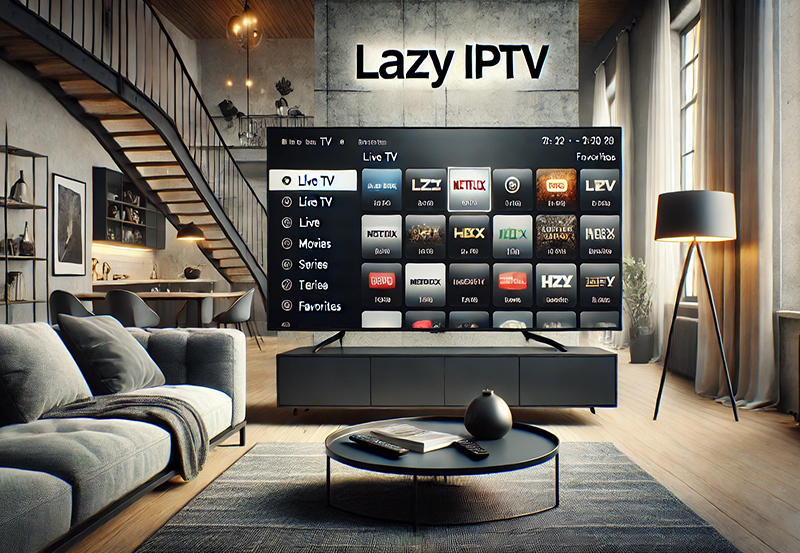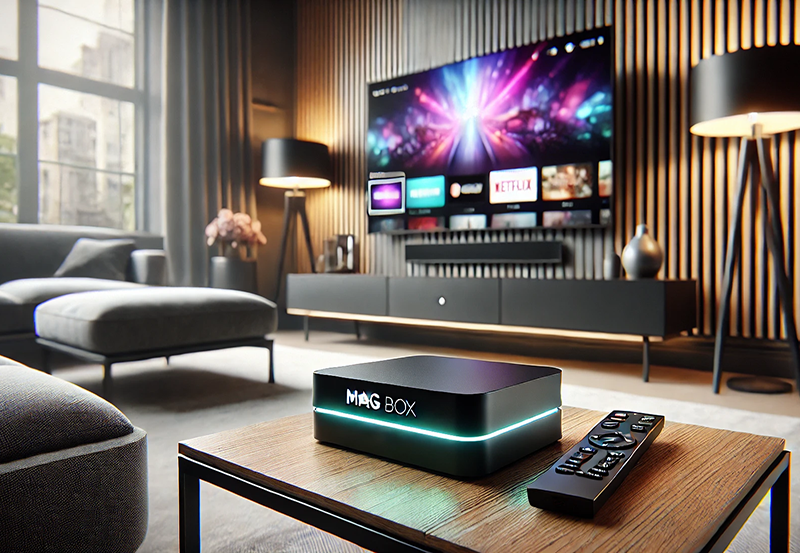In today’s digital world, there’s an ever-growing demand for high-quality media streaming. For those of us looking to cut the cord with traditional cable services, IPTV has become a popular choice. But, what happens when the picture quality isn’t quite up to par? If you’ve found yourself wrestling with the video display on your VLC player, you’re certainly not alone. This article will guide you through practical steps and professional insights to amplify your IPTV enjoyment effortlessly.
Understanding IPTV and VLC Player
Before diving into solutions, it’s essential to grasp the basics of what IPTV is and how VLC fits into the picture. IPTV, or Internet Protocol Television, streams live television programs through the internet rather than traditional satellite or cable formats. As a flexible and popular media player, VLC is often favored for its ability to handle various file formats and streams.
What Makes IPTV Popular?
IPTV stands out because of its on-demand content, user-friendliness, and ability to deliver top IPTV subscriptions with a broad range of channels. Not needing a dish or traditional broadcast infrastructure makes it accessible.
Quick Suggestion:
Enjoy premium live TV and sports with Xtreme HD UK IPTV, the ultimate subscription for seamless streaming.
Users can access a plethora of content, from movies to live sports, making IPTV a versatile solution for entertainment fanatics. The best IPTV for streaming movies provides HD and even UHD content, though it relies heavily on both the internet service quality and the media player being used.
Why Use VLC for IPTV?
VLC is more than just a media player. It’s a highly customizable open-source tool that many choose because of its reliability and versatility. With VLC, users can tweak settings to optimize their viewing experience, and it supports many formats that can often trip up other players.
Considering its wide capacity to handle diverse codecs and streaming protocols, VLC becomes an optimal choice for IPTV streams. However, users often need to adjust certain settings to achieve the desired quality of picture and streaming stability.
Common Picture Quality Issues
While IPTV offers significant benefits, it can sometimes present certain challenges, particularly regarding picture quality. These issues often become apparent when using VLC for streaming, but with a little know-how, they are generally easy to fix.
Buffering and Lag
Buffering can be a major issue—nothing breaks the immersion more than a frozen screen or constant stuttering. This usually happens due to slow internet connection speeds or high server loads on the provider’s side.
To tackle this, users need to optimize their Internet settings and ensure that their subscription to top IPTV streams maintains reliability and speed.
Incorrect Aspect Ratios
Another common grievance is content displaying with incorrect aspect ratios. This can stretch or squish the picture, distorting the viewing experience. Aspect ratio issues often arise from mismatches between the streaming content and the player settings.
Adjusting these settings on VLC will typically correct the issue, allowing you to amplify your IPTV enjoyment effortlessly.
Optimizing VLC Settings for Better Picture Quality
Now that we’ve identified potential picture quality issues let’s look at how you can make VLC rise to the occasion by tweaking a few settings. VLC offers myriad ways to adjust and fine-tune how streams are presented.
Basic VLC Configurations
Firstly, ensure that your VLC media player is updated to the latest version. Developers frequently release updates that improve performance and fix bugs.
- Open VLC and click on ‘Preferences’ from the ‘Tools’ menu.
- Select ‘Video’ to enter the video settings.
- Ensure ‘Enable Video’ is checked. Set the output to ‘OpenGL Video Output’ for optimal performance.
Adjusting Cache Settings
The default cache settings might not always support the best streaming experience. Modifying these can reduce buffering and enhance picture quality.
- Go to ‘Preferences’ and select ‘All’ under ‘Show Settings’ to expose advanced settings.
- Navigate to ‘Input/Codecs’ and adjust the ‘File Caching’ to 1000 milliseconds for faster response times.
Advanced Codecs & Hardware Acceleration
Under the same ‘Input/Codecs’ section, consider using H.265 codec, especially when streaming high-definition content. This can significantly improve the clarity and crispness of your IPTV streams.
Ensure hardware acceleration is enabled. It’s crucial for smooth playback, particularly on less powerful devices. Look for ‘Hardware-accelerated decoding’ in the codecs section, and choose your device-specific option.
Boosting Connection Speeds for IPTV
Even with optimal VLC configurations, a poor internet connection can bottleneck your IPTV performance, leading to pixelated images and an overall lackluster experience.
Maximizing Broadband Efficiency
Start by testing your internet speed to confirm it meets the requirements for IPTV streaming. If speeds are lower than expected, consider upgrading your plan or optimizing your Wi-Fi setup.
Position your router in a central location to reduce dead zones, and ensure no physical obstructions interfere with signal distribution. Using wired connections like Ethernet can also stabilize your connection for more demanding tasks.
Choosing the Right IPTV Subscription
Not all IPTV subscriptions are created equal. Selecting the best IPTV for streaming movies can make a marked difference in picture quality and reliability. Look for providers renowned for high uptime and reliable content delivery networks (CDNs).
Consider trialing several providers to gauge their performance during peak streaming times. A top IPTV subscription will prioritize server infrastructure, which translates into smoother streams and better visual fidelity.
Integrating Additional Tools
Beyond VLC and internet settings, various tools and software can also help enhance picture quality for IPTV streaming, delivering a superior viewing experience.
Streaming Enhancers and Third-party Software
Consider utilizing streaming enhancers that work alongside VLC to boost picture quality. Software like ‘SmoothStream’ or ‘VideoForce’ can improve color depth and contrast, refining the visual output.
These tools can be especially useful for viewers with home theater setups where picture quality genuinely matters, providing enhanced clarity without needing high bandwidth.
Using Graphics Settings
Leveraging your device’s graphical settings can also help boost IPTV streams’ picture quality. Adjust graphics settings on your operating system to prioritize performance or quality as necessary.
If you’re finding inadequate results in VLC, try a specific graphical profile customized for media consumption, usually offered on platforms like Windows or macOS.
A Tailored Experience
Ultimately, achieving the best picture quality when streaming IPTV on VLC requires a combination of software adaptability and understanding your specific needs. Tailor your experience by identifying what works for you, experimenting with settings, and possibly exploring alternative resources or tools.
Remember, streaming technology is continuously evolving, offering new possibilities and solutions. By remaining proactive, you’ll stay ahead of any picture quality challenges, ensuring that your IPTV viewing remains top-notch.
Frequently Asked Questions

How can I stop buffering when using VLC for IPTV?
Buffering usually results from a slow internet connection. Ensure your broadband speed meets IPTV streaming requirements, adjust VLC’s cache settings, and consider using a wired Ethernet connection for more stability.
What’s the best IPTV subscription for high-quality movies?
The best IPTV subscriptions are often those providing reliable server infrastructure and HD or UHD streaming options. Look for subscriptions with trial offers to test during peak hours.
Can software tools improve my VLC streaming quality?
Yes, several third-party software tools can enhance streaming quality by refining video quality through adjusted contrast, color profiles, and reduced noise, especially beneficial for setups oriented towards media consumption.
Do incorrect VLC settings affect IPTV picture quality?
Absolutely, incorrect settings in VLC can significantly impact picture quality. Ensure your video output settings match your system’s capabilities, and experiment with codecs and cache settings to find the best configuration.
How often should VLC be updated for optimal performance?
Keep VLC updated to its latest version as developers frequently release new updates that improve performance, compatibility, and introduce new features that might enhance your IPTV experience.
Discover the Best IPTV Solutions for LG Smart TV




